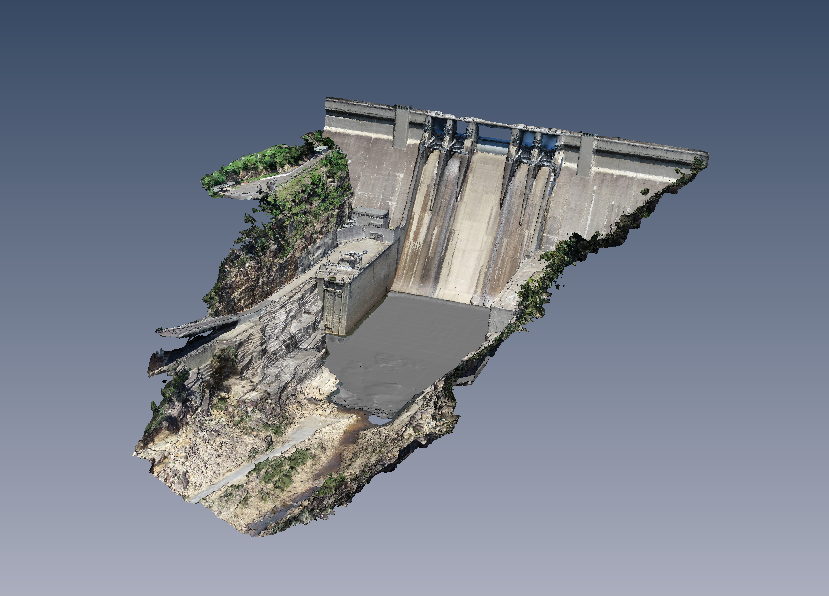
AUS-ROV specialises in advanced spatial data acquisition services designed for precise surveys and inspections. Using single-beam and multi-beam sonar technology, underwater laser scanners, and state-of-the-art 3D photogrammetry software, we deliver accurate results for various industries. Our services include 3D modeling, mapping, hydrographic survey bathymetry, and geographic information systems (GIS). We conduct detailed underwater surveys in flooded infrastructure and external benthic habitats, supporting engineering, environmental, and forensic projects. If you're looking for reliable underwater inspection, mapping, or survey solutions, AUS-ROV is your trusted partner for high-quality results.
As experts in underwater data acquisition, AUS-ROV understands the importance of precision and accuracy in our services. Our team is trained and equipped with the latest technology to ensure that we deliver reliable results for our clients. By utilising advanced sonar systems and software, we are able to capture detailed data in even the most challenging underwater environments.
Our 3D modeling services provide a comprehensive view of underwater structures, allowing for accurate measurements and assessments. Whether it's for engineering purposes or environmental studies, our mapping capabilities can assist with planning and decision-making processes. We also perform hydrographic survey capturing underwater topography (bathymetry), providing detailed depth information for safe navigation and construction projects. Using ROV technology as a platform to capture 3D point cloud data is our specialty, createing models and mosaic data using sonar, laser and cameras deployed via our ROV systems.
In addition to data acquisition, AUS-ROV also offers expert analysis and reporting services. Our team of marine scientists and engineers can interpret the gathered data to provide valuable insights and recommendations for our clients. From assessing pipeline conditions to detecting changes in marine habitats, we go beyond just collecting data- we make it meaningful and useful for decision-making processes.
At AUS-ROV, our priority is to provide high-quality results that meet our clients' specific needs. With years of experience and a dedication to continuous improvement, we have established ourselves as a trusted partner in the marine surveying industry. Our clients can rely on us for accurate and timely data, as well as professional and dependable service.
Whether it's for offshore oil and gas projects, coastal development, or environmental monitoring, AUS-ROV has the expertise and resources to support a wide range of underwater surveying needs. Contact us today to learn more about our services and how we can assist with your next project. Trust AUS-ROV for reliable and comprehensive underwater survey solutions. So why settle for less? Choose AUS-ROV for all your underwater survey needs.

AUS-ROV provides top-tier remotely operated vehicle (ROV) services in Australia, specializing in underwater inspections across diverse industries. With a team of seasoned experts, we deliver safe, efficient, and cost-effective solutions tailored to manage underwater assets effectively. Trust AUS-ROV for unparalleled quality and reliability in ROV operations.
AUS-ROV utilise multi-beam and single-beam sonars to capture three dimensional spatial data on underwater structures and environments. Multibeam sonars are used to acquire high resolution bathymetric survey data and produce 3D underwater topographic models. Single beam sonars can be utilised to profile dimensions of internal or external structures and replicate these structures in 3D cloud software. Specialising in sonar applications, AUS-ROV excels at locating shipwrecks and reefs, charting potential shipping hazards, and producing comprehensive 3D maps of underwater environments and structures.
At AUS-ROV, we leverage advanced, state-of-the-art technology for precise spatial data acquisition. Our team of hydrographic surveyors, GIS specialists, and technicians are highly respected experts in their field. When you need reliable spatial scientific services, turn to AUS-ROV for a customized solution designed to deliver the best possible results for your project. We pride ourselves on our professionalism, attention to detail, and commitment to delivering accurate and timely results.
Our comprehensive range of services also includes seabed mapping, pipeline route surveys, bathymetric surveys, and marine construction support. No matter the complexity or scale of your project, AUS-ROV has the expertise and equipment to handle it with precision and efficiency.
With years of experience in the industry, AUS-ROV has built a reputation for excellence in underwater survey solutions. Our clients trust us for our quality workmanship, attention to safety, and reliable results. We understand the unique challenges of working in an underwater environment and are well-equipped to handle them with ease.

AUS-ROV provides top-tier remotely operated vehicle (ROV) services in Australia, specializing in underwater inspections across diverse industries. With a team of seasoned experts, we deliver safe, efficient, and cost-effective solutions tailored to manage underwater assets effectively. Trust AUS-ROV for unparalleled quality and reliability in ROV operations.
AUS-ROV utilise multi-beam and single-beam sonars to capture three dimensional spatial data on underwater structures and environments. Multibeam sonars are used to acquire high resolution bathymetric survey data and produce 3D underwater topographic models. Single beam sonars can be utilised to profile dimensions of internal or external structures and replicate these structures in 3D cloud software. Specialising in sonar applications, AUS-ROV excels at locating shipwrecks and reefs, charting potential shipping hazards, and producing comprehensive 3D maps of underwater environments and structures.
Sonar data provides an excellent means of interpreting underwater structures and is often the only viable option in challenging environments where traditional sensors, such as cameras or laser scanners, fall short due to physical or environmental limitations.
Sonar is commonly used in surveying by mounting it to the hull of a boat, just below the waterline, to scan the seafloor. When combined with GPS positioning data, the sonar output can be processed in real time and automatically mosaicked using survey acquisition software. For greater detail, sonar can also be mounted on remotely operated vehicles (ROVs) or autonomous underwater vehicles (AUVs), allowing closer mapping of specific areas than what is typically achievable from the surface.
However, this approach introduces a challenge: accurately positioning the ROV. With advanced software, data can be processed using semi-automatic mosaicking methods. Raw sonar captures are extracted as individual images and precisely aligned within GIS software. Algorithms for stitching and blending these images are used to create a seamless, homogenous mosaic. This mosaic can then be georeferenced onto existing plans and orthophotos, enabling detailed identification and mapping of features for further analysis.
Over time, multiple mosaics can be layered to monitor changes in the environment. Additionally, vectorizing the data to map specific points of interest enhances compatibility across different software platforms and fosters collaboration with related fields. This process ensures that sonar data is not only accurate but also versatile for a wide range of professional application
-

TWO-DIMENSIONAL SEMIAUTOMATIC MOSAICKING WITHOUT GPS POSITIONING DATA
AUS-ROV engineers have developed a semiautomatic sonar image mosaicking method which does not require navigational positioning. The raw sonar data is extracted as single images and precision aligned in GIS software. Algorithm for stitching and blending is used for processing all images in one homogenous mosaic. As that it is georeferenced on existing plans or orthophoto. With sonar mosaicked data all details can be identified and mapped for further analysis. Multiple mosaics can be stacked and changes can be monitored over time. Vectorising data, mapping details of interest, further improves interoperability among the different software platforms and connects to other branches of similar profession.
-

THREE-DIMENSIONAL MULTIBEAM SONAR BATHYMETRIC SURVEY
Bathymetry is the study and mapping of sea floor topography. It involves obtaining measurements of the depth of the ocean and is equivalent to mapping the topography on land. AUS-ROV use multibeam sonars to perform bathymetric surveys on behalf of our clients. Sonar can be used for locating near-surface seamounts and reefs, charting shipping hazards and understanding underwater environments. Engineering companies can use bathymetric data to determine location of subsea cables, oil and gas structures and sea floor pipelines. Often more specialised activities such as searching for missing planes, vessels or other man made objects on the sea floor are carried out. Australia's fishing industry also use bathymetric data to identify possible locations for deep sea fishing. The images below shows sections of bathymetric survey data that was carried out by AUS-ROV using the Norbit iWBMS Multibeam Sonar.
-

THREE-DIMENSIONAL TUNNEL AND PIPELINE PROFILING SONAR
AUS-ROV have developed a system for 3D modelling of internal sections of pipelines and tunnels. Our ROV’s integrated with profiling sonar has the ability to produce a 3D model of a tunnel or pipeline, even in zero visibility water.

Our 2G Robotics ULS200 Underwater Laser Scanner captures high accuracy point cloud data
Creating 3D models of submerged items using underwater laser scanning can reveal fine-scale three-dimensional features not identifiable though use of other conventional survey technologies. AUS-ROV 2G Robotics ULS200 underwater laser scanner can produce sub-millimetre accurate results.
THREE-DIMENSIONAL UNDERWATER LASER SCANNING
Creating 3D models of submerged items using underwater laser scanning can reveal fine-scale three-dimensional features not identifiable though use of other conventional survey technologies. Laser scanning technology enables virtual interaction with underwater assets in detail not previously achievable. AUS-ROV utilise a ULS-200 underwater laser scanner from 2G Robotics and can perform underwater laser scanning in order to produce 3D models of assets. Please give us a call to discuss your specific requirements and we can tailor a solution that provides the highest achievable certainty in BIM or CAD models.
STATIC LASER SCANNING
Creating 3D models of submerged items using underwater laser scanning can reveal fine-scale three-dimensional features not identifiable though use of other conventional survey technologies. Laser scanning technology enables virtual interaction with underwater assets in detail not previously achievable. AUS-ROV utilise a ULS-200 underwater laser scanner from 2G Robotics and can perform underwater laser scanning in order to produce 3D models of assets. Please give us a call to discuss your specific requirements and we can tailor a solution that provides the highest achievable certainty in BIM or CAD models.
DYNAMIC LASER SCANNING
The ULS-500 PRO is 2G Robitics longest range underwater laser scanner. When fitted to an ROV with an inertial navigation system for positioning, the system can dynamically capture true-scale, high-precision 3D models of underwater features such as shipwrecks, pipelines or offshore O&G structures. Dynamic Laser Scanning reduces survey time as it enables capture of High Resolution 3D point clouds without static positioning, providing greater survey coverage with less bottom time. The ULS-500 is a leader in its class, for more information, visit 2G Robotics.

Photogrammetry is an advanced technique merging photography and surveying to extract precise measurements and spatial data from images. By capturing overlapping photos from different angles, it constructs detailed 3D models. Widely used in fields like cartography, architecture, and archaeology, it offers unparalleled opportunities for spatial analysis and visualization, driving innovation across industries.
Video passing through a photogrammetry model of the inside of a desalination plant intake tunnel, which AUS-ROV captured high-resolution video footage of in order to generate the 3D photogrammetric dataset.











